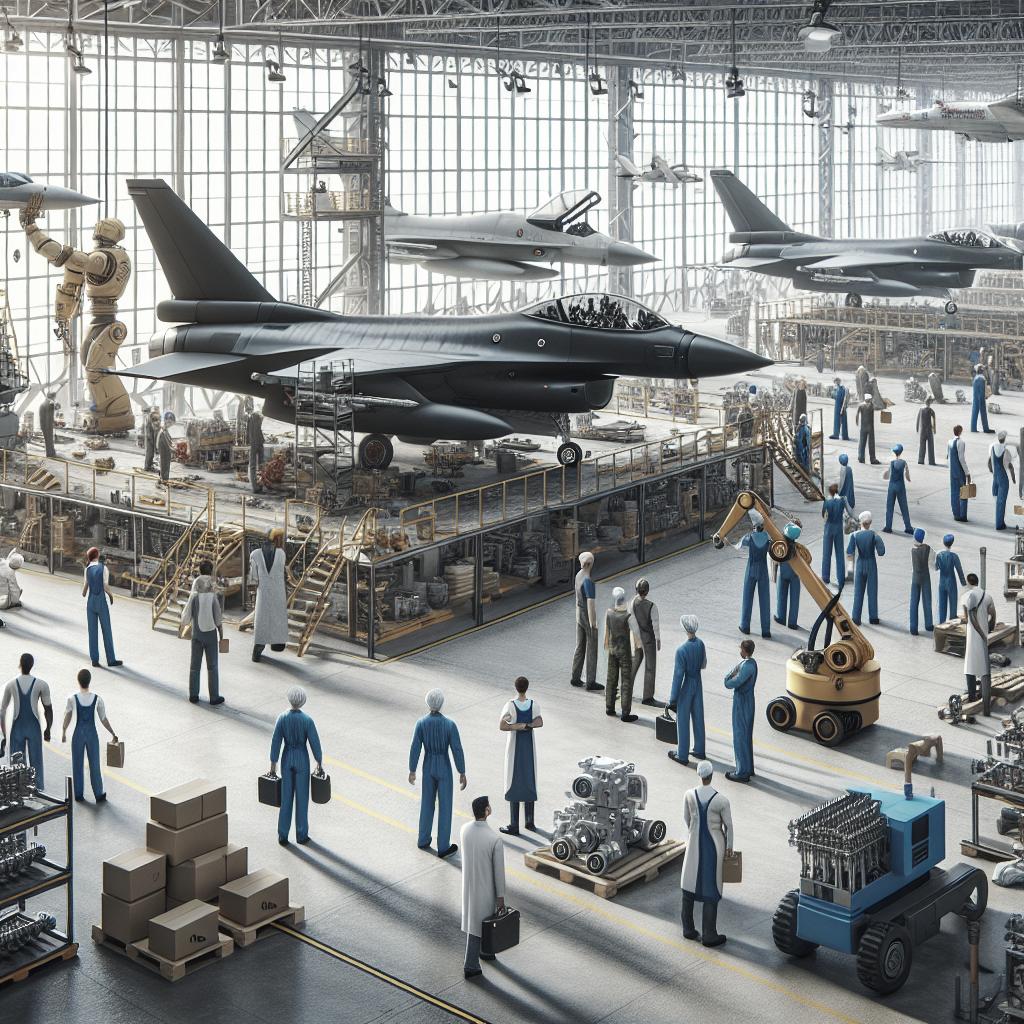The military aerospace industry represents a fascinating amalgamation of cutting-edge technology, engineering marvels, and strategic prowess. This blog seeks to delve into the key players and innovative practices in this domain. We will explore a cross-country analysis of the military aerospace industry’s giants, dive into the technological advancements fusing into modern armaments, and examine how major manufacturers are branching out and diversifying their portfolios. By the end of this read, you’ll gain a holistic perspective on the global leaders shaping the skies and battlefield dynamics.
Cross-country analysis of the military aerospace industry
The military aerospace industry is marked by a handful of global giants that dominate both production and innovation. The United States, Russia, and China are the top-tier players, each with their own sophisticated defense programs and extensive investment in aerospace technology. These nations have committed to maintaining air dominance through high tech military aircraft designed to provide strategic advantage and field superiority. American industry leader Lockheed Martin, the Russian heavyweight Sukhoi, and the Chinese state-owned AVIC (Aviation Industry Corporation of China) illustrate the stark contrasts and competitive spirit permeating the field. Each country leverages its technical prowess and industrial base to push the envelope of what military aircraft can achieve. The doctrines and strategic goals of these nations deeply influence their design and manufacturing priorities, reflecting their unique geopolitical concerns. The European Union, meanwhile, showcases collaborative ventures like Airbus and BAE Systems, which combine nuanced engineering and organizational agility to maintain a competitive edge. The aerospace sector in Europe tends to incline more towards joint-development programs and alliances, often emphasizing reliability and multipurpose use. This diversity illustrates how the regional focus on design, production strategies, and technological advancements cater to distinct military needs and strategic objectives.
Fusing technology for armament purposes
The fusion of technology for modern armament purposes is a testament to human ingenuity at its peak. Today’s military aircraft are equipped with advanced avionics, stealth capabilities, and integrated smart systems, making them more efficient, deadly, and versatile. Stealth technology remains a hallmark innovation, allowing aircraft to operate undetected, thus achieving strategic surprise and tactical advantage over adversaries. Advanced avionics systems play a pivotal role by integrating critical flight data, defensive measures, and targeting information in real-time. The integration of AI and machine learning in these systems contributes to quicker decision-making processes and more accurate threat assessment. This represents a notable shift from conventional manual operations towards more autonomous, responsive, and intelligent systems. Weapon systems have seen phenomenal advancements with precision-guided munitions, hypersonic missiles, and revamped drones playing crucial roles. These technologies ensure pinpoint accuracy, reduced collateral damage, and the ability to engage in long-range operations. Together, avionics, stealth technology, and advanced weaponry define the cutting-edge nature of modern military aerospace, elevating the capabilities of armed forces globally.
Leading the Pack: Global Giants in Military Aviation
Lockheed Martin is an undisputed leader in the field, fortifying its status with iconic aircraft such as the F-22 Raptor and F-35 Lightning II. These aircraft symbolize the pinnacle of stealth technology, multi-role capabilities, and advanced sensor suites. Lockheed Martin’s focus on continuous improvement ensures that its products remain at the forefront of technological advancements. Russia’s Sukhoi company stands out with its formidable fleet, including the Su-57 and Su-35. These aircraft showcase advanced aerodynamics, robust armament, and sophisticated avionics, making Sukhoi a dominant player in the realm of military aviation. Their designs often differentiate with an emphasis on agility and power, aimed at maintaining air superiority in the Eurasian theater. China’s AVIC mirrors the nation’s meteoric rise to global prominence. With aircraft like the J-20 and J-31, AVIC positions itself as a growing contender in the aerospace arena. These aircraft signify China’s commitment to cutting-edge stealth and avionics technology, allowing it to project power and redefine regional military balances.
Branching Out: Top Players and Diversification
Each of these aerospace giants is leveraging its technical expertise to branch out and diversify. For example, Lockheed Martin is expanding into domains like cybersecurity, autonomous systems, and space exploration. This versatility ensures that the company remains robust across different facets of defense and technology industries. Sukhoi is not far behind, branching into civil aviation projects and joint ventures with other global manufacturers. This not only mitigates the risks associated with heavy reliance on defense contracts but also creates new revenue streams and technological synergies. The diversification strategy helps in diffusing financial volatility while fostering innovation through cross-sector collaboration. AVIC embodies the broader strategic goals of China’s state-led industrial policies by venturing into commercial aviation and advanced manufacturing technologies. By expanding its horizons beyond military aircraft, AVIC strengthens the nation’s industrial base and supports broader economic growth initiatives. Their comprehensive approach helps in establishing global partnerships and improving their competitive stance worldwide.
Next Steps
The military aerospace industry remains a dynamic field characterized by rapid technological advancements and intense global competition. As major manufacturers continue to innovate and diversify, they shape the future of modern warfare. Below is a summary of key points discussed:
| Headline | Key Points |
|---|---|
| Cross-country analysis of the military aerospace industry | USA, Russia, and China dominate; unique approaches to design and strategy; Europe’s collaborative ventures |
| Fusing technology for armament purposes | Stealth technology, advanced avionics, AI integration, precision weaponry |
| Leading the Pack: Global Giants in Military Aviation | Lockheed Martin, Sukhoi, AVIC; leadership in technology and innovation |
| Branching Out: Top Players and Diversification | Diversification into cybersecurity, civil aviation, and space exploration; mitigating risks and fostering innovation |
With the continued evolution and diversification within the military aerospace sector, staying up-to-date with these advancements is crucial for understanding global military dynamics and future technological trends.


